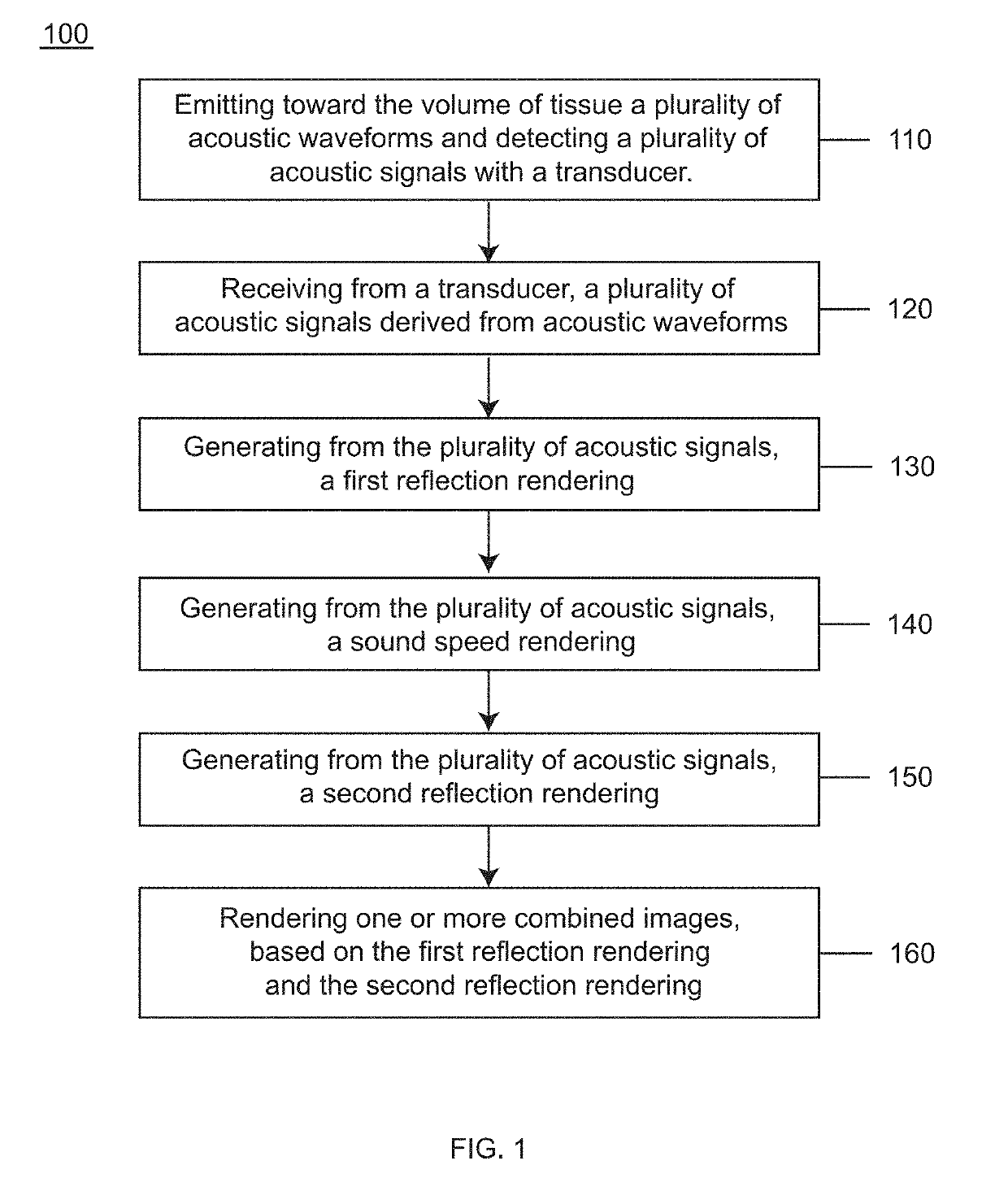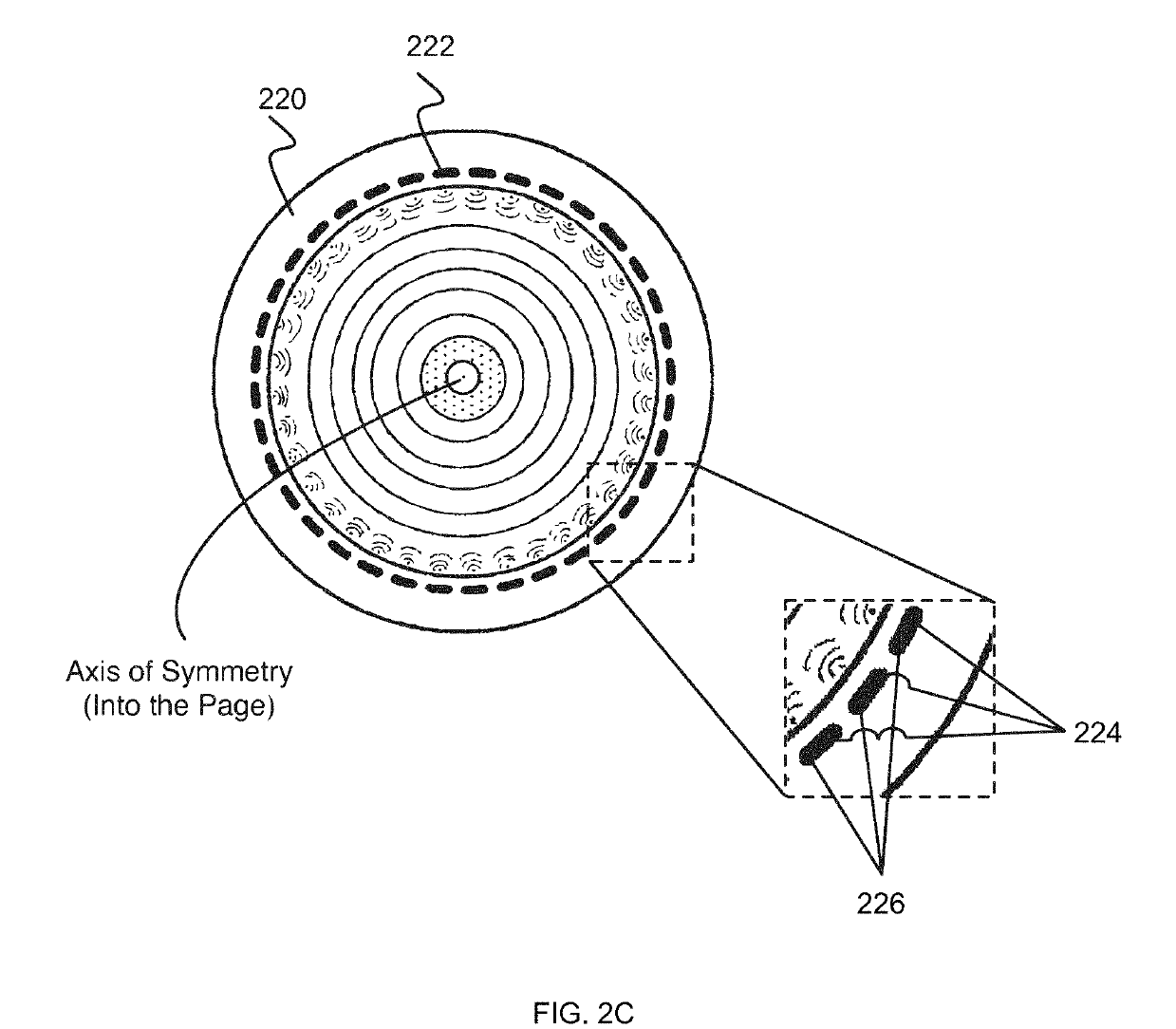Waveform enhanced reflection and margin boundary characterization for ultrasound tomography
a technology of ultrasound tomography and enhanced reflection, which is applied in image enhancement, instruments, applications, etc., can solve the problems of loss of signal coherency, limitations of imaging dense breasts, and current methods for ultrasound reflection imaging that are less than ideal in some respects, and achieve enhanced reflection images of a volume of tissue. , the effect of high spatial resolution
- Summary
- Abstract
- Description
- Claims
- Application Information
AI Technical Summary
Benefits of technology
Problems solved by technology
Method used
Image
Examples
example 1
[0173]Clinical studies were conducted to develop a method of generating an enhanced image of a volume of tissue and a method for characterizing a volume of breast tissue of a patient. Results are presented from clinical studies that utilize breast imaging that is based on ultrasound tomography, which quantifies tissue characteristics while also producing 3-D images of breast anatomy, which methods described herein may include.
[0174]Informed consent was obtained from all patients, prospectively recruited in an IRB-approved protocol following HIPAA guidelines. Coronal images were produced by tomographic algorithms for reflection, sound speed and attenuation. All images were reviewed by a board-certified radiologist with more than 20 years of experience in breast imaging and US-technology development. In the first phase of the study, UST images were compared to multi-modal imaging to determine the appearance of lesions and breast parenchyma. In the second phase of the study, correlativ...
PUM
 Login to View More
Login to View More Abstract
Description
Claims
Application Information
 Login to View More
Login to View More - R&D
- Intellectual Property
- Life Sciences
- Materials
- Tech Scout
- Unparalleled Data Quality
- Higher Quality Content
- 60% Fewer Hallucinations
Browse by: Latest US Patents, China's latest patents, Technical Efficacy Thesaurus, Application Domain, Technology Topic, Popular Technical Reports.
© 2025 PatSnap. All rights reserved.Legal|Privacy policy|Modern Slavery Act Transparency Statement|Sitemap|About US| Contact US: help@patsnap.com



